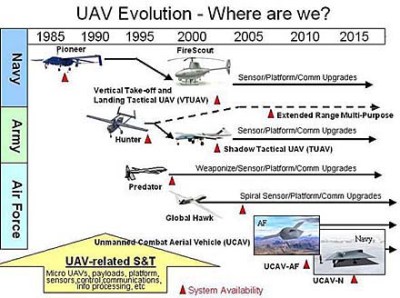The use of Unmanned Aerial vehicles and other robotic systems in the military operations has increased steadily over the years. The UAVs are used to perform the three D’s –dirty, dull and dangerous tasks in war.
 UAV's evolution in U.S Defense
UAV's evolution in U.S Defense
The U.S Department of Defence (DOD) has increased the number of UAVs from 50 in 2000 to more than 7000 in 2010. In the year 2009, U.S Air Force began training pilots for operating unmanned vehicles rather than bombers or fly fighters or bombers. According to a study conducted by ABI Research, as many as 65 countries are now using military robots or are planning to begin using them or purchasing them.
These robots however, cannot be considered perfect in their operation. There have been instances where they operate in situations for which they have not been designed and for which their responses cannot always be predicted. Some of the UAV’s with DOD are highly sophisticated with dozens of sensors, high-resolution night vision cameras, acoustic arrays and 3-D imagers. Despite these advanced features, most of them cannot distinguish between a sleeping dog and a bush even during daytime. There is still a need for human intervention for operating the vehicles and for data interpretation. For robots to autonomously enter the battle field, much additional advancement in sensing, seamless interoperability and agile testing need to be incorporated. Even after making all these advancements, their ability to make crucial decisions still remains a question.